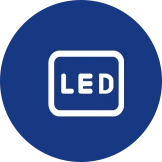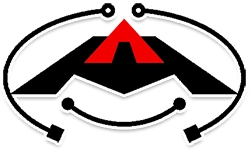High-Volum PCB Assembly Services
● Over 15+ Years of Electronics Manufacturing Experience
● ISO & IATF Certified Facilities
● 3 Factories and 500+ Skilled Staff
● Serving Global Clients in 20+ Countries

Looking for Large-Scale PCB Assembly Manufacturing?
If you need high-volume PCB assembly, Mars PCB is your one-stop solution. As a respected PCBA manufacturer in China, our team delivers top-of-the-line assembly services. With numerous repeat customers worldwide—especially in North America, Europe, and Asia Pacific—Mars PCB stands ready to exceed your expectations in quality and performance.
Defining High-Volume PCB Assembly
High-volume PCB assembly refers to producing boards in large batches—generally from a thousand units up to hundreds of thousands per production cycle. This model keeps costs in check by reducing repeated prototyping steps. It offers efficient, bulk PCB fabrication in accelerated timeframes to match tight market demands.

Key Technologies for High-Volume PCB Assembly

Single or double-sided SMT is an extremely efficient assembly method. Precision equipment places components directly onto the PCB surface, helping maximize space usage. The automated process ensures each board meets rigorous standards, even at large output volumes.

THT is optimal for power-demanding circuit boards. Components are inserted into drilled holes and carefully soldered for high durability. It’s a go-to choice for assemblies that operate under harsh conditions and mechanical stress.

In some cases, both SMT and THT are required. Smaller parts can be surface-mounted for space optimization, while heavier, power-intense parts are inserted through holes. This hybrid approach supports boards that handle large currents yet require miniaturized electronics.

Equipment That Powers Our Large-Scale PCB Production
Pick-and-Place (P&P) MachinesC
Our advanced P&P systems use vacuum nozzles to lift components from reels or trays and position them accurately onto PCB pads. Each machine is designed for high-speed performance, placing thousands of parts per hour with minimal errors. The result: consistent, precision-fitted boards.
Reflow Ovens
Reflow ovens solidify solder joints by heating each board to carefully regulated temperatures. Poor solder quality often stems from uneven heating, so maintaining correct thermal profiles is crucial. We use multiple reflow oven configurations, from convection-based to vapor-phase, to suit various product requirements.
Count on Mars PCB’s global presence to satisfy your large-scale assembly goals.
SMT vs. THT:
The Main Contrasts
● Through-Hole Technology (THT) offers sturdy connections, inserting leads through drilled holes.
● Surface Mount Technology (SMT) emphasizes compact layouts by soldering components directly onto the board.
While SMT may appear costlier upfront, it’s often more economical in large volumes since assembly is almost fully automated.
SMT Components | THT Components |
Smaller in size and ideal for compact layouts | Generally larger |
Greater component density on both sides of the board | Requires hole drilling, which can limit design freedom |
Easier to replace single faulty parts | Repair can be more complicated due to leads and hole alignment |
Includes ICs, diodes, and small power regulators | Best suited for larger parts such as connectors or capacitors |
Why Prioritize SMT for Large-Volume PCB Runs?
SMT excels for high-volume assembly if you need rapid, high-precision, smaller-scale boards. Reasons include:
Automation: Most steps—placement, soldering, inspection—are machine-driven, speeding production.
Mass Production Efficiency: Once prototypes are validated, it’s feasible to make thousands of compact boards rapidly.
No Drilled Holes: Placing components directly reduces both fabrication time and complexity.
Double-Sided Mounting: Utilize both sides of the PCB for higher density, essential in consumer electronics.
Meeting High Demand: Popular for devices requiring advanced circuitry, from laptops to industrial modules.
Scenario 1: Both Large and Miniature Components
Many designs integrate very small chips (mountable via SMT) and more sizable connectors (requiring THT). For instance, IoT modules may have microcontrollers placed on the board surface and power connectors soldered through holes.
Scenario 2: Handling High Voltage or Current
Industrial equipment often carries substantial current loads. THT is the safer choice for areas requiring stronger mechanical and thermal resistance, while SMT handles smaller, space-saving parts.
Scenario 3: Unique or Legacy Designs
Sometimes older PCBs need partial redesign. Integrating modern features with THT-based older components can enhance performance while maintaining backward compatibility.
Scenario 4: High Temperature and Mechanical Endurance
Automotive or aerospace boards may operate under extreme heat. Blending THT and SMT can achieve both durability and compactness for the critical components in these environments.
Scenario 5: External Ports and Connectors
Connections like USB or RJ45 ports demand mechanical security. THT ensures those ports withstand continuous usage and external stress, whereas surface-mounted chips handle control logic or data processing.
Our Standard High-Volume PCB Assembly Workflow

Using a metal stencil, solder paste is expertly deposited onto the PCB at precise locations. Ensuring each aperture aligns with the correct pad is critical to achieve reliable solder joints.

Automated pick-and-place equipment secures each component accurately over the solder paste. Proper alignment guarantees a consistent product.

Boards then go through reflow ovens set to specific temperature ranges (about 100°C–300°C), binding components to the PCB. A carefully maintained thermal profile reduces soldering flaws.

We conduct optical checks, solder paste measurements, and X-ray screenings to detect any hidden defects. This triple-layer inspection safeguards uniformity.

Finally, each assembly is powered for operational tests, verifying signals, power distribution, and design specifications.
Advantages of Mass-Production PCB Assembly
Long-Term Cost Effectiveness
By confirming your design early, the per-unit cost during large-scale runs is significantly lowered. Bulk purchasing of parts and less repeated prototyping also contribute to savings.
Rapid Delivery Schedules
High-speed machinery and automated steps shorten build times for thousands—or even tens of thousands—of boards.
Consistency and Reliability
Automation keeps production tolerances tight, ensuring each board mirrors the approved sample. Multiple checkpoints detect issues before final shipment.
Expandable Capacity
Large-volume assembly enables you to effortlessly boost or cut back production to match market fluctuations. This flexibility is vital for global brands growing at scale.

Which Industries Depend on High-Volume PCB Assembly?

Consumer Electronics
TVs, home entertainment, kitchen appliances—used by billions globally.

Computing & Devices
Laptops, smartphones, and peripherals thrive on rapid, bulk PCB supply.

Automotive
Control modules, infotainment, and engine management systems require durable, large-scale assemblies.

Medical Equipment
High-precision boards for diagnostic and treatment tools require both accuracy and stringent process control.

Industrial Automation
Sensors, robotics, and factory controls all lean on mass production for cost and performance efficiency.
Why Choose Mars PCB for High-Volume PCB Assembly?

Proven Expertise
Mars PCB has been in electronics manufacturing since 2002, with over 15 years of industry leadership. Our 3 factories, spanning 30,000 square meters, produce a broad array of products: rigid, flex, HDI, heavy copper PCBs, and more. We’ve handled complex technical challenges and maintain a robust track record, ensuring minimal rework and maximum consistency.
Scalable Operations
Whether you need prototypes or mass shipments in the tens of thousands, we have the capacity for seamless scale-ups. Our monthly output reaches 300,000 boards, making us an excellent fit for businesses that anticipate growth.
Comprehensive Quality Protocols
Our facilities comply with ISO9001, ISO14001, IATF16949, OHSAS18001, ISO/IEC27001, ISO13485, and AS9100 standards. Additionally, we partner with certified raw material suppliers, employing advanced inspections like AOI and X-ray to confirm each board’s performance.
Responsive Communication
We assign a dedicated project manager to keep your order on track and address any adjustments. Our global service team is always ready to assist with technical, scheduling, or logistic needs.
Start Your High-Volume PCB Production with Mars PCB
We provide end-to-end high-volume PCB assembly solutions under one roof. Our capable engineers, fully automated lines, and extensive industry experience guarantee reliable, cost-effective boards.
Contact us now to kick-start your project. Call or email us with your design files, and we’ll promptly deliver a detailed quote. Count on us from concept validation to final product launch.

Take a Virtual Tour of Mars PCB
Established in 2002 in Shenzhen, Mars PCB’s main factory spans more than 30,000 square meters. With 3 advanced manufacturing plants, we can handle everything from advanced HDI boards to specialized solutions like metal core or high-frequency PCBs. Our team of 500 experienced professionals ensures your project stays on schedule and meets global quality standards.
High-Volume PCB Assembly FAQ
HDI (High-Density Interconnect) PCBs incorporate more intricate layering and narrower trace widths for denser circuits. They employ microvias and buried vias, delivering better signal performance and reduced stray impedance compared to typical boards. HDI designs are frequently preferred for advanced or space-critical applications.
High-volume assembly often reduces the per-unit cost by eliminating repetitive prototyping. Thanks to streamlined automation, turnaround is swift, and the entire batch adheres to consistent specifications. Scaling up lowers the overall chance of errors since the design phase is verified just once before bulk production.
Quality originates from selecting a certified manufacturer. Mars PCB follows recognized industry guidelines and acquires components from vetted sources. We also rely on AOI, X-ray scanning, and stringent functional tests—ensuring each board meets performance standards before shipment.
Your All-in-One PCB Assembly Partner
Mars PCB is here to turn your concepts into finished products. Let’s bring your designs to life with expert SMT solutions.
